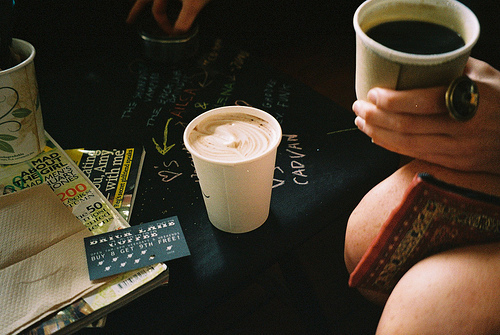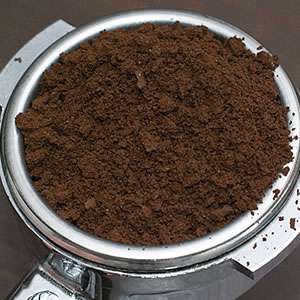Of everything you might encounter when grinding coffee at home, it is arguably one of the most crucial steps, as grind size alone can dramatically change the taste of your cup. Grind size and consistency can be the difference between one of the best cups you’ve ever had and a bitter, undrinkable mess.

Discover how grind size affects your cup and which is right for your brew method of choice.
When it comes to grind size, there are three factors which make the biggest difference: contact time,extraction rate and flow rate. To put it simply:
- The extraction rate of coffee grounds increases with a larger surface area.
- To increase surface area, grind the coffee finer.
- The higher the extraction rate, the less contact time is needed.
- A finer grind can reduce the flow rate of water, increasing the contact time.
Knowing this, if you have a brew method with a short contact time, the grind should be finer. In an immersion brewer, which steeps coffee grounds in water for several minutes, the contact time is much higher and, thus, requires a more coarse grind than most other brew methods.
If the contact time is too high or the grind is too fine, it will result in an over-extracted brew which can be bitter. If the grind is too coarse or the contact time is too short, the coffee will turn out weak.
Finding the proper balance between the two will help in producing the best cup of coffee possible.

Another popular question is how finely to grind coffee? How coarse or fine your grind depends on your brewing method. For now, what you need to know is that:
(Reference: Make Good Coffee)
- Different brewing methods take different amounts of time to combine water and coffee into one hot brewed beverage.
- The longer the heated water is going to be exposed to the coffee, the coarser a grind you will use.
- In the drip brewer common to North American households, you would use a medium grind.
Using a Fine Grind
With espresso, the steam of water is forced through the ground coffee. This means the water is exposed to the coffee for a much shorter time and therefore, a fine grind is used. As mentioned at the outset, your source for whole beans will have an industrial grinding machine where you choose the setting and grind onsite. In a specialty coffee shop, you can trust this machine. Otherwise at a grocery store or outlet of a smaller coffee chain, assume the machine will not give an accurate grinding. These machines require maintenance and calibration on a regular basis, and it’s up to you to trust in whether that is happening often enough or at all, particularly with grocery stores.
Using a Medium Grind
Remember to grind what you need right before brewing. Use a burr grinder preferably. Finally, grind to a coarseness that suits your brewing method. In the case of conventional North American drip brewing, go with a medium grind.